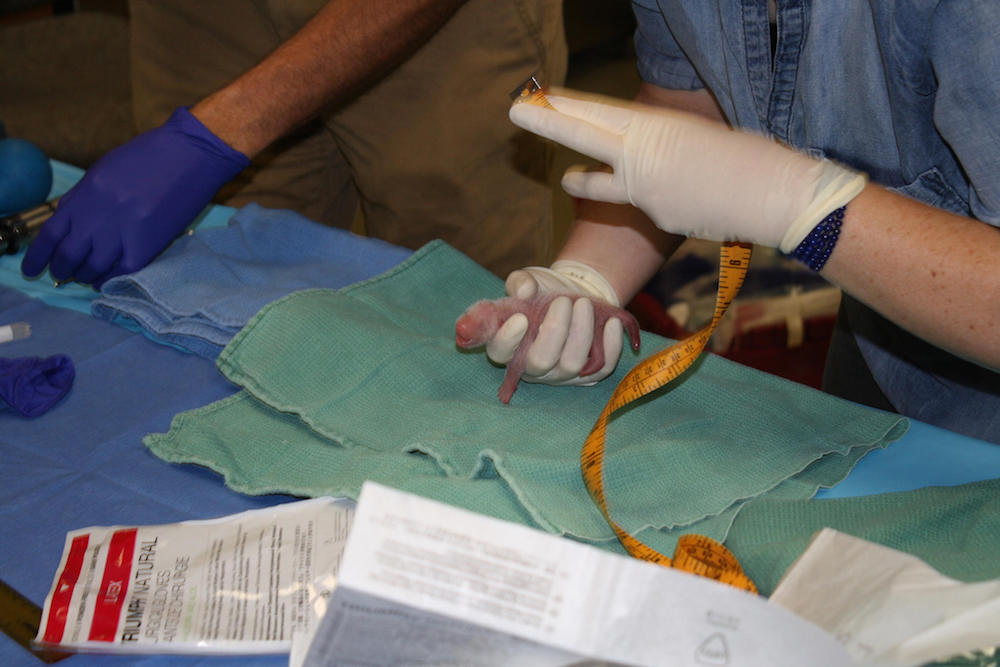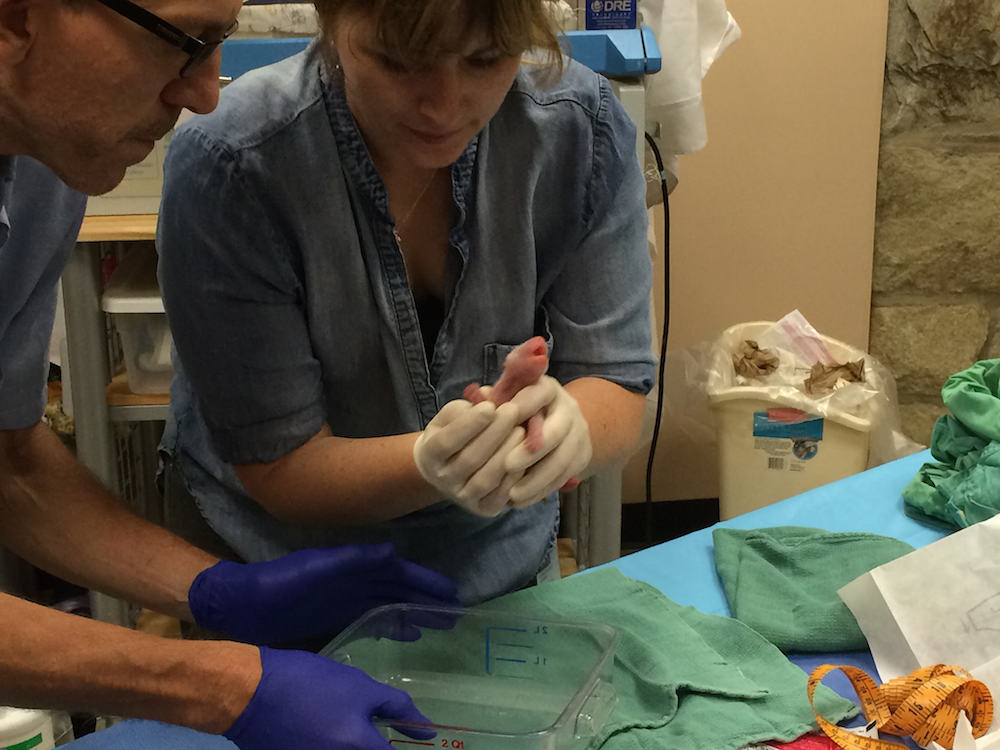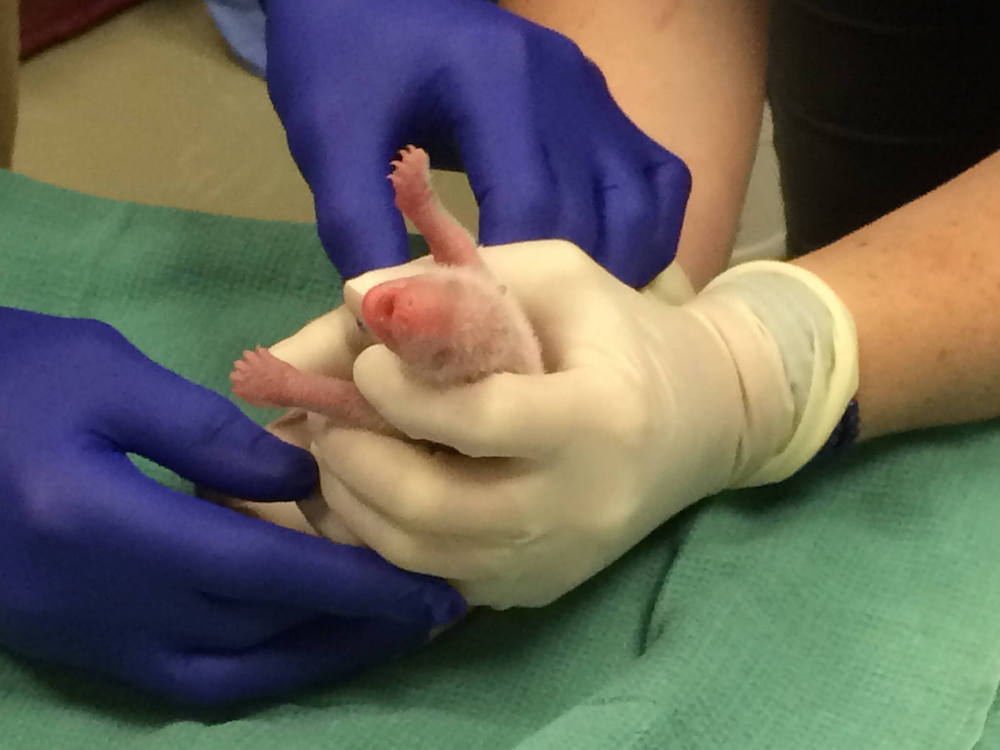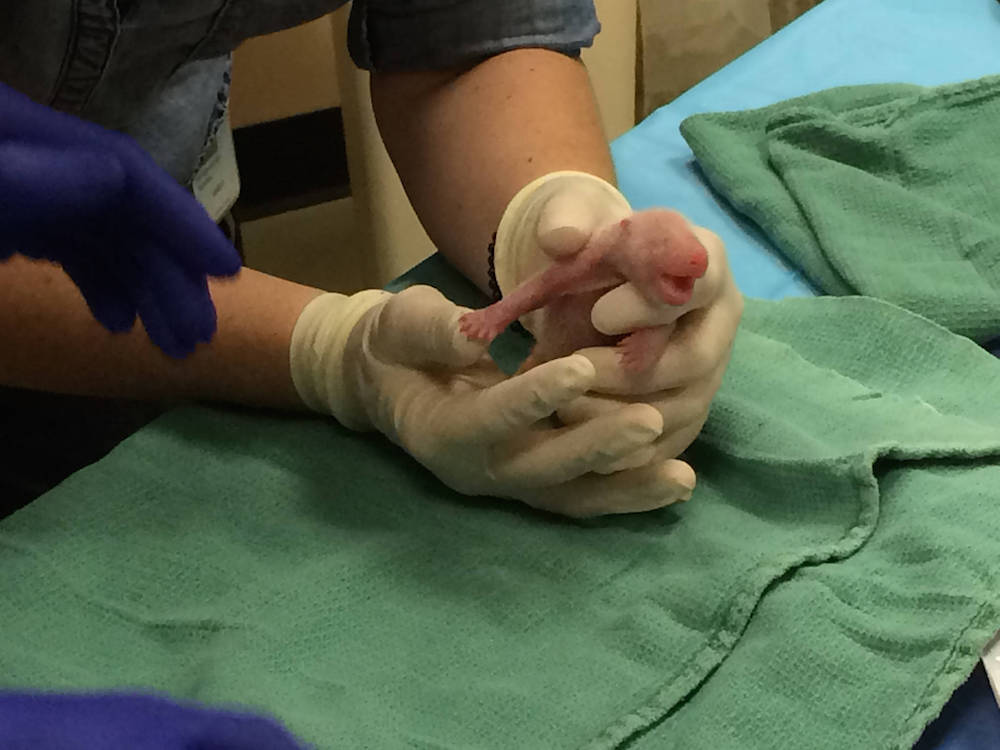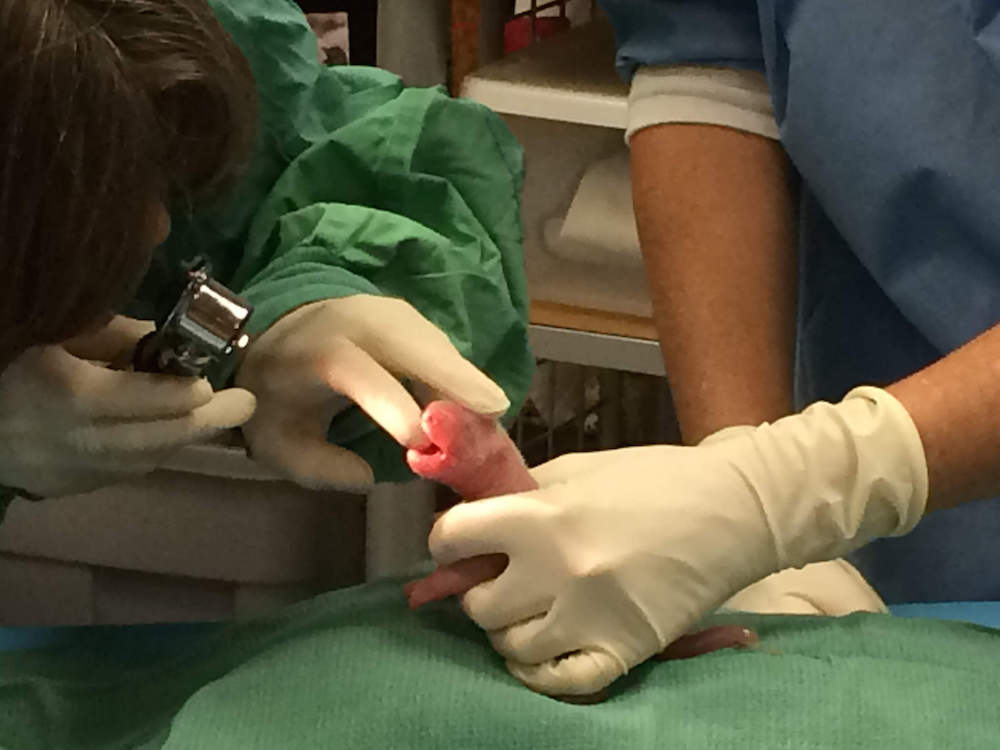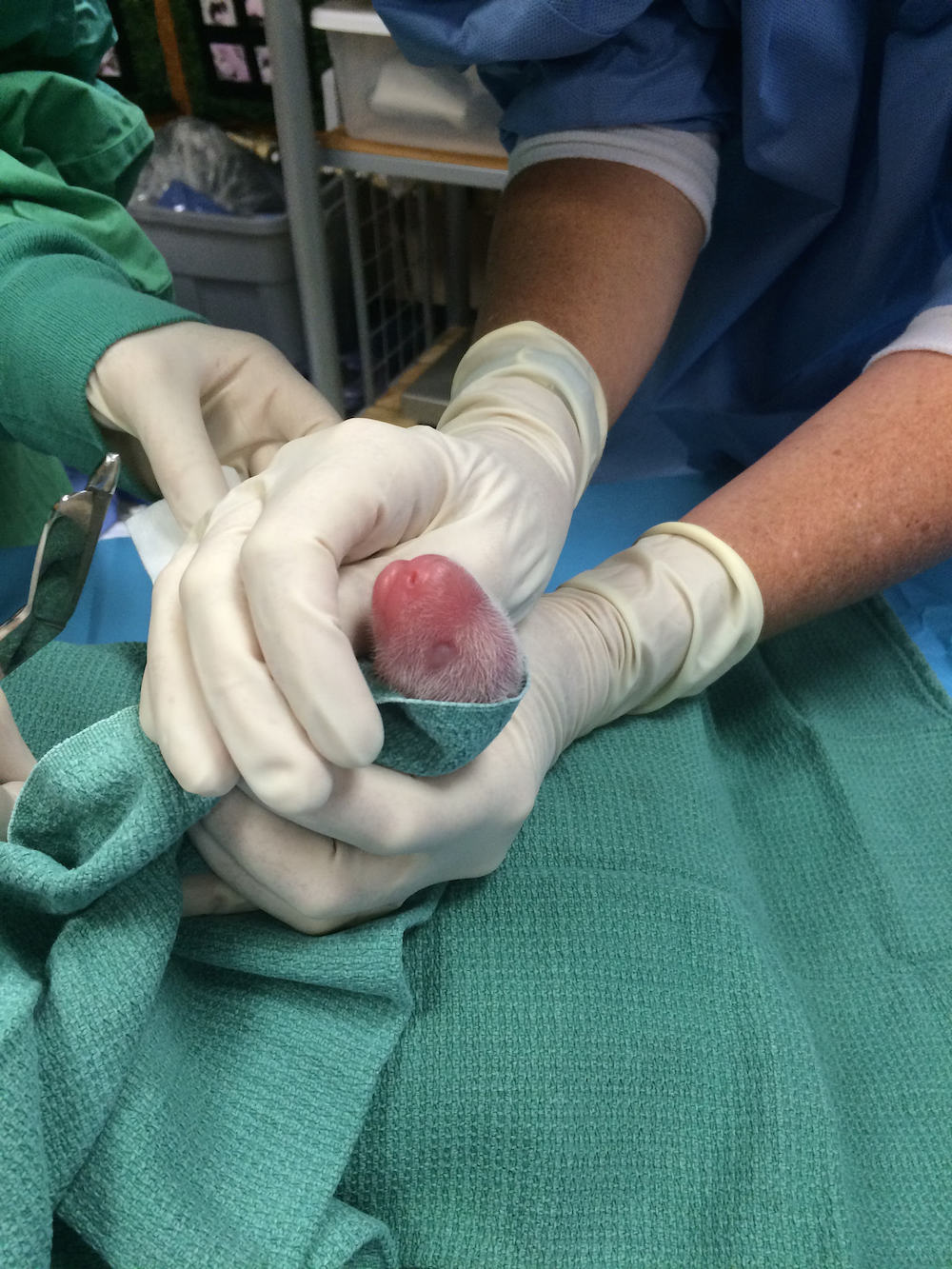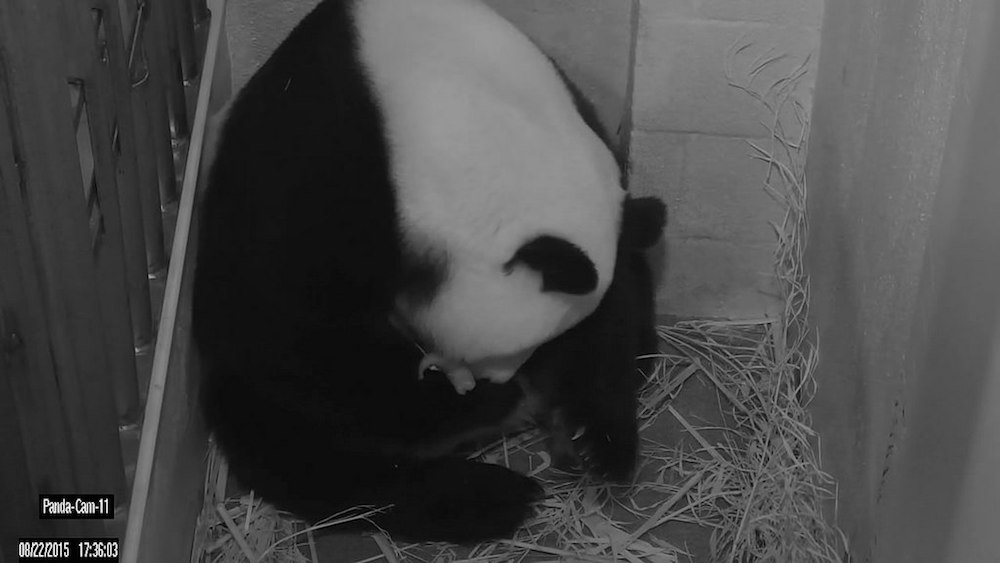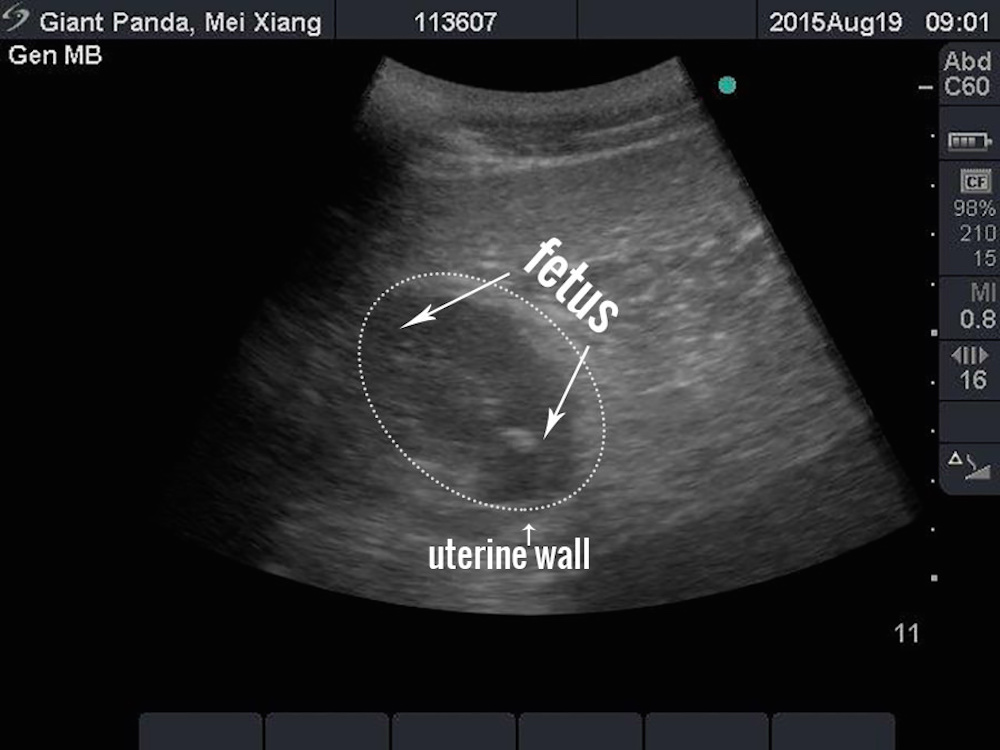Photos: New Panda Twins Keep D.C. Zookeepers Busy
The Smithsonian's National Zoo is home to two new twin pandas. The mother, Mei Xiang (may-SHONG), gave birth to the cubs at 5:35 p.m. and 10:07 p.m. EDT on Saturday (Aug. 22). Mei Xiang can take care of only one cub at a time, so while one cub is with Mom, the other rests in an incubator at the zoo. After about 3 to 4 hours, the zookeepers switch the cubs, giving the newborns equal time with Mei Xiang. [Read the full story on the twin panda cubs]
Tape measure
Zoo staff measure the second-retrieved cub. When the cub isn't spending time with its mother, it rests in an incubator at the zoo and feeds on a special formula made out of water, human baby formula and puppy formula. (Image credit: Devin Murphy, Smithsonian's National Zoo)
First exam
The second-retrieved cub squirms as a team examines the animal's weight, length, mouth size, heart rate and breathing rate. (Image credit: Pamela Baker-Masson, Smithsonian's National Zoo)
A star is born
The second-retrieved cub already has tiny claws, but still has a lot of developing to do. (Image credit: Pamela Baker-Masson, Smithsonian's National Zoo)
Get the world’s most fascinating discoveries delivered straight to your inbox.
Squealing cub
Giant pandas give birth to twins about 50 percent of the time. However, the mother can only pick up and care for one twin at a time, so zoo staff are helping both cubs survive by rotating them from their mother's den to the incubator every 3 to 4 hours. (Image credit: Pamela Baker-Masson, Smithsonian's National Zoo)
Open wide
Veterinarians examine the first retrieved-cub's mouth with a light. (Image credit: Pamela Baker-Masson, Smithsonian's National Zoo)
Swaddled panda
Veterinarians swaddle and examine the first-retrieved cub. Its sex won't be determined until a later date. (Becky Malinsky/Smithsonian's National Zoo)
Heartbeat
The veterinarians check the heartbeat of the first-retrieved cub. (Photo credit: Pamela Baker-Masson, Smithsonian's National Zoo)
The birth
Giant panda Mei Xiang delivered two cubs on Aug. 22. Her water broke at 4:32 p.m., and she gave birth at 5:35 p.m. EDT. After giving birth to the first cub, Mei Xiang picked it up. (Image Credit: Panda-Cam-11 (8_22_2015 5_36_04 PM) )
Panda ultrasound
Veterinarians used panda sperm to artificially inseminate Mei Xiang in April. An ultrasound in late August showed what veterinarians believed to be a fetus. However, it was still unclear whether Mei Xiang was having a real or a pseudo pregnancy, in which her body would act like it was pregnant even though it wasn't. (Image credit: Smithsonian's National Zoo.)
Follow Laura Geggel on Twitter @LauraGeggel. Follow Live Science @livescience, Facebook &Google+.

Laura is the managing editor at Live Science. She also runs the archaeology section and the Life's Little Mysteries series. Her work has appeared in The New York Times, Scholastic, Popular Science and Spectrum, a site on autism research. She has won multiple awards from the Society of Professional Journalists and the Washington Newspaper Publishers Association for her reporting at a weekly newspaper near Seattle. Laura holds a bachelor's degree in English literature and psychology from Washington University in St. Louis and a master's degree in science writing from NYU.
